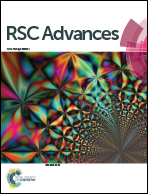Interaction of procyanidin B3 with bovine serum albumin
Abstract
Proanthocyanidins are a mixture of monomers, oligomers, and polymers of flavan-3-ols that are widely distributed in the plant kingdom. One of the most widely studied proanthocyanidins is procyanidin B3. In this study, the interaction between procyanidin B3 and bovine serum albumin (BSA) was investigated using isothermal titration calorimetry (ITC), in combination with fluorescence spectroscopy, UV-vis absorption spectroscopy, Fourier transform infrared (FT-IR) spectroscopy, circular dichroism (CD) spectroscopy and molecular docking. Thermodynamic investigations reveal that the electrostatic interaction and hydrophobic interaction are the major binding forces in the binding of procyanidin B3 to BSA. The binding of procyanidin B3 to BSA is synergistically driven by enthalpy and entropy. Fluorescence experiments suggest that procyanidin B3 can quench the fluorescence of BSA through a static quenching mechanism. The obtained binding constants and the equilibrium fraction of unbound procyanidin B3 show that procyanidin B3 can be stored and transported from the circulatory system to reach its target organ. Binding site I is found to be the primary binding site for procyanidin B3, which is consistent with the result of molecular docking studies. Additionally, as shown by the UV-vis absorption, synchronous fluorescence spectroscopy, FT-IR and CD, procyanidin B3 may induce conformational and microenvironmental changes of BSA.


 Please wait while we load your content...
Please wait while we load your content...